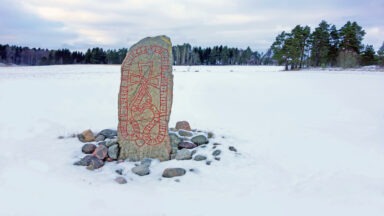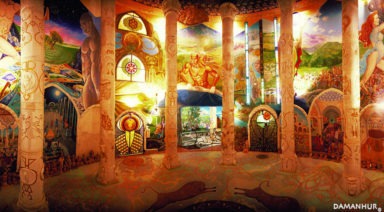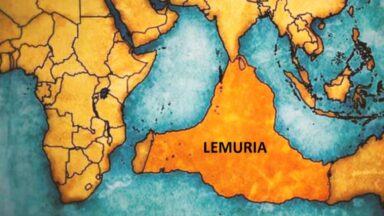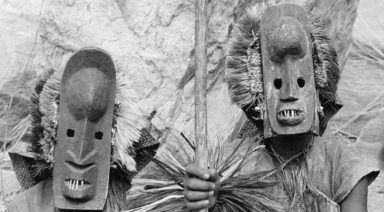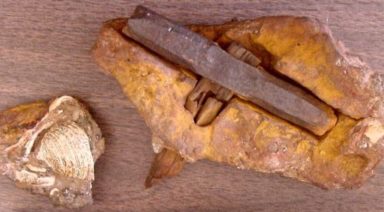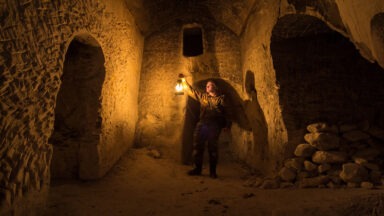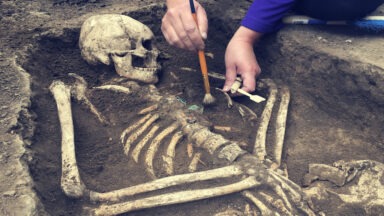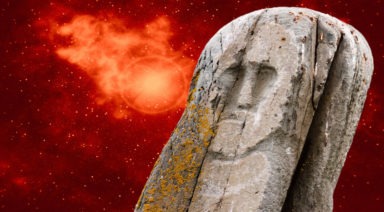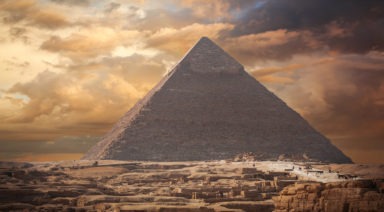Ancient Anatolia: Cradle of Civilization?
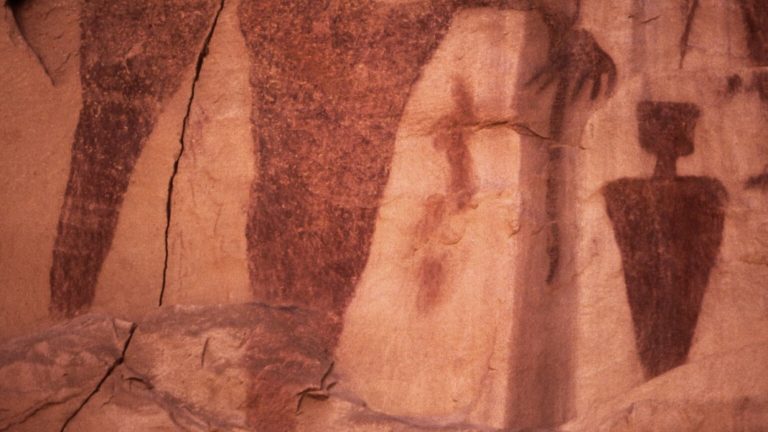
As humans, we’ve progressed from living in primitive dwellings to villages, then full-scale civilizations. This shift has been gradual but certainly significant.
How exactly did the concept of civilization come about? Unlike simple villages, civilizations are much more structurally and socially advanced. Let’s dive deeper into what makes up a civilization and where the first civilization originated.
What is a civilization?
A civilization is the most advanced stage of human development and societal organization. While experts debate the primary characteristics of a civilization, the main attributes include:
- Cities or “urban settlements”
- Social classes
- Agriculture and animal husbandry
- Government
- Trade and production
- Public buildings
- Metallurgy
- Written language
- Technology/scientific development
- Monumental architecture
It’s important to keep in mind not all of these attributes are necessary for a society to be characterized as a civilization. For example, the Incas did not have a written language, yet they were a highly advanced civilization. Therefore, it may be better to think of these attributes as guidelines for measuring the advancement of a civilization.
Where did civilizations come from?
The term “cradle of civilization” is synonymous for “birthplace of civilization.” In other words, it’s a place where civilization began.
Some experts believe there was no one single “cradle,” but rather several civilizations developed independently. Several origins of civilization include Caral, Peru; Egypt; and China.
However, there is one particular region that’s widely accepted as the original — and perhaps the sole — cradle of civilization: Anatolia, which is located in modern day Turkey.
Anatolia: Cradle of Civilization?
Although it is difficult to pinpoint a singular cradle of civilization, there is some evidence to suggest that Anatolia may have been the birthplace of civilization as we know it today.
First and foremost, scientific findings suggest Anatolia played a huge role in agricultural development and may have acted as a “hub” for spreading farming techniques westward into Europe.
Secondly, scientists have traced the origins of ancient grains — specifically, einkorn wheat — to Anatolia. This is particularly significant because of the “technical complexity and the culinary manipulation” that are necessary to turn these grains into staples. Therefore, the ability to produce cereals signifies a highly advanced society.
Anatolia’s proximity to Europe likely helped facilitate the spread of agriculture to westerners, but how did the people of Anatolia become so advanced in the first place?
The Advancements of Anatolia
Anatolia was a hub for advanced civilizations including the Hittites, the Assyrians, and the Greeks, but before the rise of these civilizations, there was Gobekli Tepe.
Gobekli Tepe is an ancient site that has been called “The World’s First Temple.” It features technology and architecture that were highly advanced for the times, considering it was built some 11,000 years ago.
Research suggests outsiders may have influenced and inspired the construction of Gobekli Tepe through what is known as a “transfer of technology.” Ancient civilization researcher Graham Hancock has explored this idea in-depth, arguing a third party taught advanced skills to the native humans of the area.
Some believe the Annunaki bestowed their knowledge upon the Anatolia region. This group of deities is frequently referenced in ancient texts, in which they are praised for their sophisticated scientific and mathematical abilities.
Did the concepts of farming and agriculture also come from the Annunaki? If this is indeed the case, it means we can credit these mystical beings for skills and techniques we still rely on today. Moreover, it means that the Annunaki played an enormous role in the foundation of civilization itself.
There is certainly plenty of information to absorb with regard to how civilizations came to be. Based on what we know about Anatolia and the Annunaki, we can assume both may have played a big role in the foundation and evolution of civilization. As with any complex topic, we encourage you to continue to explore this subject on your own.
Want more like this article?
Don’t miss Ancient Civilizations on Gaia to journey through humanity’s suppressed origins and examine the secret code left behind by our ancestors.
The Transformational Power of the Viking's Runes
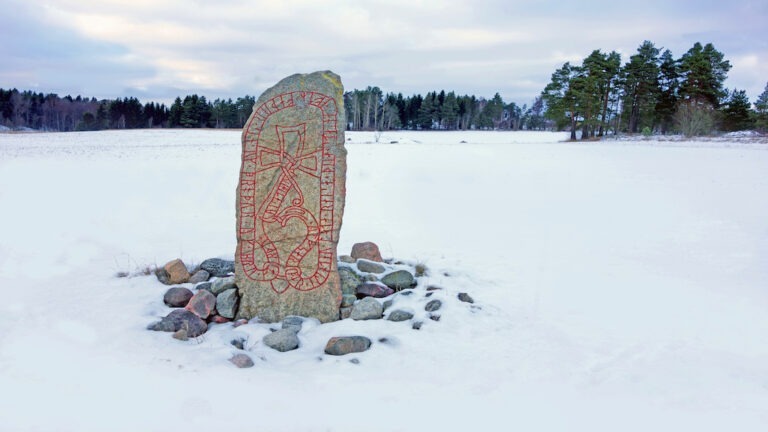
The Birth of Runes
The Viking runes came into being when Odin brought them forth from another world. Historians from the National Museum of Denmark explain that Odin ruled over Asgard, which contains Valhalla, “the hall of the slain.” Half the warriors who died in battle were collected by his female handmaidens, the valkyries, who belonged to him. As such, Odin was the object of worship by kings, warrior chieftains, and their people.
In a mythic Viking tale, Odin wounds himself with his own spear before hanging himself from the Yggdrasil—the world tree in Norse culture—for nine nights, drawing wisdom from the Depths of Urd, just below it. From there, Odin sees the runes that existed even before his own coming into being, “a time before time.”
Just as he’s about to die, Odin gathers up the runes and shares them with all of creation and an array of supernatural entities and human beings. Eventually, the runes were given their shapes and phonetic values by subsequent tribal elders. They were carved on weapons, tools, jewelry, amulets, bones, pieces of wood, memorial stones, church walls, and other hard surfaces.
Ancient peoples of the Germanic lands knew the runes to be beyond the time and space with which most people are familiar. Some experts suggest that they were never really “invented,” but are instead eternal, pre-existent forces that Odin discovered through his aforementioned superhuman ordeal.
Historians have linked the runes to areas with a history of Germanic-speaking peoples, including from Iceland to Scandinavia, throughout England, and into Central Europe. Even Constantinople is home to the runes, showing that ancient seafaring cultures had made their way into what is now modern-day Turkey.
Reading the Runes
We may use the metaphor of a tree to assess how the runes are read. Historian Emma Groeneveld noted that “they are generally made up of vertical lines — one or more — with ‘branches’ or ‘twigs’ jutting out diagonally (and very occasionally horizontally) upwards, downwards or in a curve from them. They can be written both from left to right and from right to left, with asymmetrical characters being flipped depending on the direction of writing.
Each rune represents a phoneme (a speech sound) and had a name, made up of a noun, that started (and in one case, ended) with the sound the rune was mainly associated with. Lots of regional and temporal variation existed in the shapes of the letters.”
Experts of Norse mythology explain that, on the surface, runes seem to be letters. However, they are much more, because each one is a symbol of a cosmological principle or power. The very act of writing a rune called upon unseen spiritual forces. In every Germanic language, wrote historian Daniel McCoy, the word rune comes from the Proto-Germanic word that means both “letter” and “mystery.”
The Eternal Magic of the Runes
The runes have been used to link the natural and supernatural worlds, and this gives them the power to enact spells for protection or success. Still, said Olsen in an exclusive Gaia interview, according to archaeological and historical evidence, runes were used as magical tools for healing, transformation, building wealth, and for making the world a better place.
The power of the runes is in their sound vibrations, teaches Olsen. Each runic character represents a letter so that it can be combined with others to form words. The runes are also magical symbols, and each character has its own name and symbolic meaning.
Norwegian historian Marit Synnøve Vea explained that runes are not limited to their carved signs, but are also applied in certain songs, magical formulas, secret skills, and for secrets hidden in Skaldic (Old Norse) poetry. Vea noted that runic magic was used to foretell the future, as a form of protection, to cast spells, to cure illness, to bestow love, and much more.
But where there is power, there is a warning. In the wrong hands and minds, runes carved by unskilled persons could represent risky business. Vea cites a poem from the Old Norse Egil Saga that serves as an ancient warning for the modern generation:
Runes none should grave ever
Who knows not to read them;
Of dark spell full many
The meaning may miss.
Ten spell-words writ wrongly
On whale-bone were graven:
Whence to leek-tending maiden,
Long sorrow and pain
The history of the runes is the history of timelessness, a paradox among paradoxes. Often regarded as tools for parlor games, serious historians have found the deeper meaning in ways the runes can be read and applied for the betterment of life on this planet and the invisible worlds.


